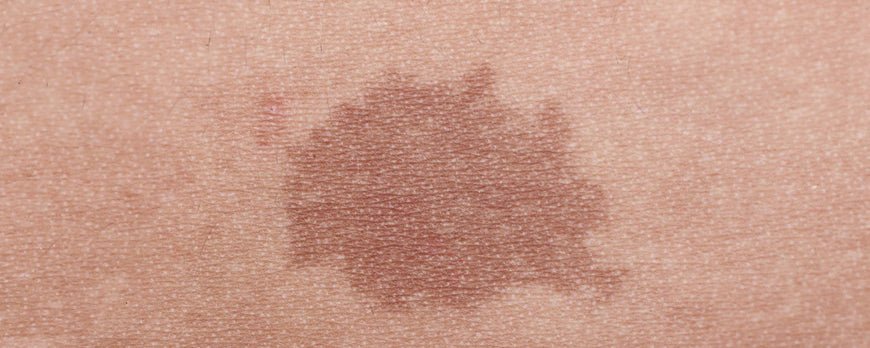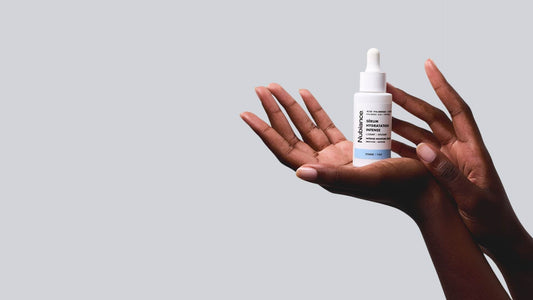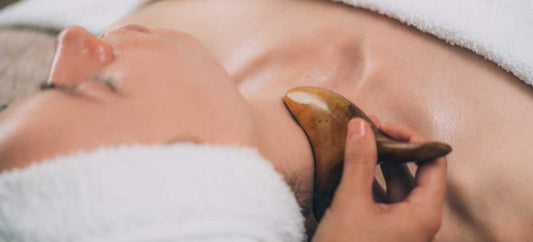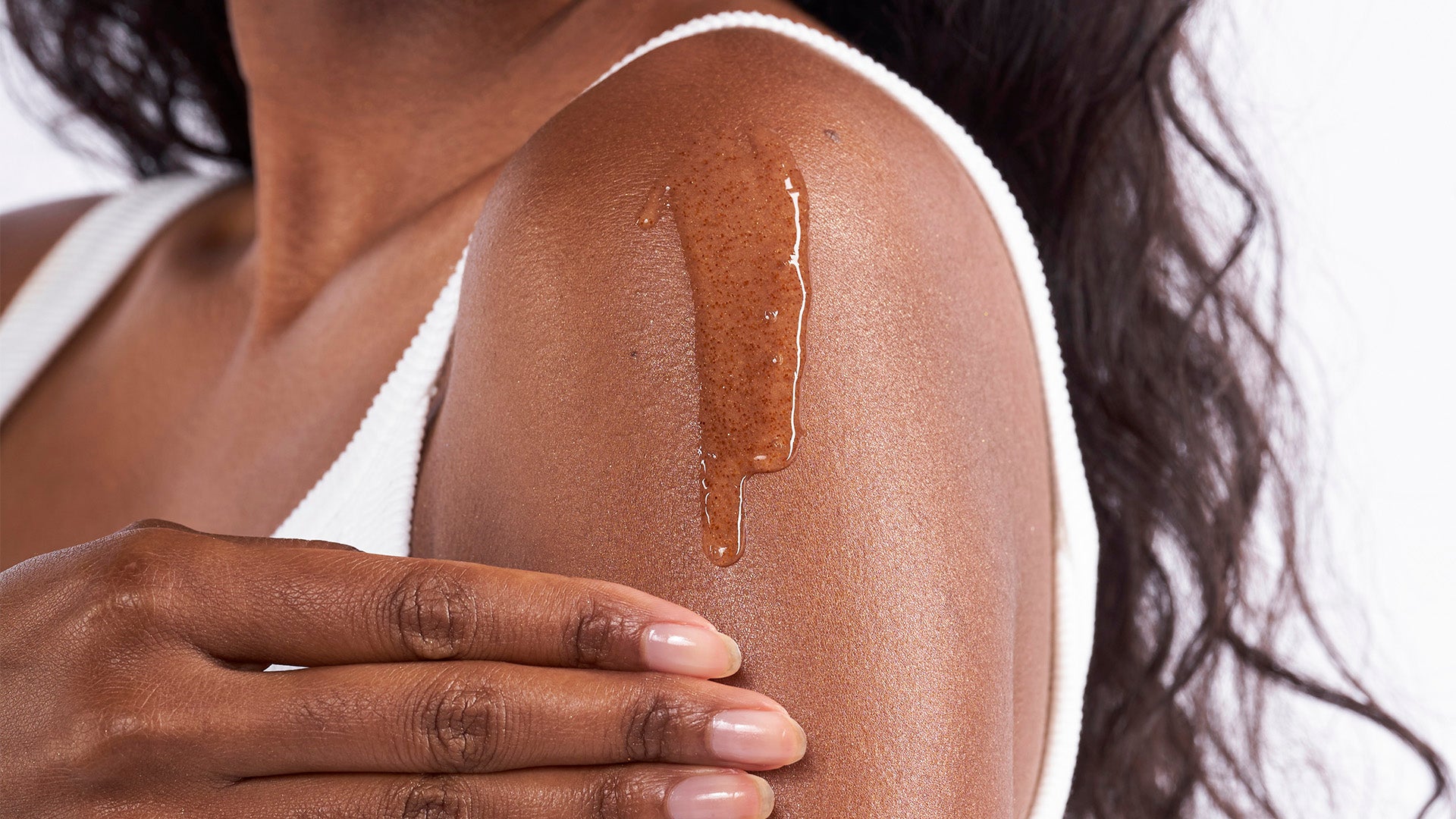
Post Inflammatory Hyperpigmentation: Causes and Treatment
Partager
Hyperpigmentation of the skin: what to do against spots?
Hyperpigmentation particularly affects black and mixed-race skin. The problem is that it can also leave long-term scars. This excessive melanin production concentrates on one or more parts of the body, but mainly affects the face. At Nubiance, we have developed specific treatments against brown or black spots to combat the problem of hyperpigmentation in black skin.
What is post-inflammatory hyperpigmentation and what causes it?
Post-inflammatory hyperpigmentation results from an overproduction of melanin following inflammation of the skin. Cytokines and inflammatory mediators can have a stimulating effect on melanocytes, leading to increased melanin production. Inflammation can also cause destruction of basal keratinocytes, leading to pigment buildup at the site of injury. Post-inflammatory hyperpigmentation can occur after any type of skin injury such as acne, dermatitis or traumatic injury, and can appear on the skin and/or epidermal layers. Post-inflammatory hyperpigmentation is not physically harmful, but many people seek treatment because of the aesthetic, emotional, or even social effects. Post-inflammatory hyperpigmentation can occur on all skin types. On the other hand, it is generally more frequent, visible and persistent in people with darker skin (phototypes 4 to 6). The color of hyperpigmentation can vary depending on skin color and location on the skin (dermal or epidermal). It can then appear as red, purple, brown or bluish. There is also a correlation between the intensity of the original inflammation and the intensity of the resulting post-inflammatory hyperpigmentation. Repeated inflammation at the same site (such as recurring acne pimples) and repeated sun exposure can exacerbate post-inflammatory hyperpigmentation.
How to avoid hyperpigmentation spots?
Protect your skin to unify it
Post-inflammatory hyperpigmentation is known to take a long time to treat. It is often said that an ounce of prevention is worth a pound of cure… Avoiding inflammation is the best way to avoid post-inflammatory hyperpigmentation. You should also avoid doing anything that causes the inflammation to worsen, such as scratching an acne pimple or tearing off a scab following an injury. To get rid of pigment spots, you have to do it as soon as possible. Indeed, the sooner the stains are treated, the sooner they will disappear. You will be able to find a unified and smooth complexion. Our treatments for hyperpigmentation of black skin allow deep treatment of the epidermis to eliminate spots. They are suitable for all skin types, even dry and sensitive skin. Our dermocosmetic products are composed of powerful active ingredients capable of acting on tyrosinase, an enzyme responsible for the production of melanin (melanogenesis). At Nubiance, we select only high quality ingredients to formulate effective anti-blemish care that respects your skin . They promote cell renewal and moisturize the skin of the face and body.
Sun protection against hyperpigmentation spots
To say goodbye to hyperpigmentation spots on black skin, it is necessary to apply creams and serums with integrated sun protection (minimum SPF 20). Indeed, you must protect your skin from UV rays, regardless of your skin color. Sunscreen should always be applied to light, dull or black skin before prolonged exposure. This simple gesture avoids creating new pigment spots or aggravating existing ones. To improve the appearance of your skin, our face cream contains an SPF 30 . All our products have been laboratory tested and formulated to guarantee you the greatest efficiency. There's nothing like it to reduce the hyperpigmentation of black skin, even out the complexion and restore the skin's natural radiance!
How to get rid of hyperpigmentation spots?
Our treatments perfectly suited to hyperpigmentation in black skin Fortunately, there are many well-studied treatments to treat pigment spots. Anti-dark spot serum , anti-dark spot kit, corrective care, body and armpit product: we have developed a wide range of treatments against hyperpigmentation for the face and body. You benefit from a tailor-made routine to treat your skin and pigmentation problems. Taking care of the health of your epidermis is crucial and all our beauty products are formulated with the latest generation molecules. Our combination of high-performance active ingredients gives convincing results in the treatment of hyperpigmentation in black skin, whether on very dry skin or oily skin. Our treatments regulate the production of melanin and epidermal pigment for a progressive and safe attenuation of brown or dark spots.
Here are some of the most well-known topical treatments:
Sunscreen – treatments for post-inflammatory hyperpigmentation increase the skin's sensitivity to the sun, so it is advisable to combine this with the use of a broad-spectrum SPF sunscreen. Our HRB-3 anti-dark spot day care contains a combination of anti-dark spot active ingredients and sun protection. Otherwise, there is a high chance that the treatment will not only fail, but it can also cause further damage to the skin. Used alone, sunscreen can help prevent any existing hyperpigmentation from getting worse.
Retinoids – these vitamin A derivatives are commonly prescribed for acne, but can also help fade hyperpigmentation. They work by increasing epidermal rolling, facilitating the dispersion and elimination of melanin. The most common side effects of retinoid use are redness, dryness, and irritation. Retinoid dermatitis can lead to further hyperpigmentation, especially on darker skin, so it may be beneficial to start with a low strength retinoid and gradually increase the amount and frequency of use. Retinoids can be prescribed by your doctor or dermatologist.
Niacinamide – better known as vitamin B3, it works by inhibiting the transfer of melanosomes from melanocytes to keratinocytes. In general, it does not cause irritation and is well tolerated. All products in the Nubiance HRB3 range contain vitamin B3.
Chemical peels - Superficial chemical peels using alpha hydroxy acids are common treatments and are generally well tolerated. Chemical peels work by promoting the exfoliation and dispersal of the basal layer of melanin. Glycolic, lactic and salicylic acid gels have been shown to be effective in treating hyperpigmentation. Glycolic acid may also be effective in treating superficial atrophic scars because it increases collagen synthesis through the skin. Potential side effects may be burning sensation, redness, and skin irritation or tenderness. Salicylic acid can cause dryness, especially for people with drier skin. Excessive irritation can lead to further hyperpigmentation, so it's important to choose your treatment ingredients carefully, taking into account your skin type and any allergies and/or sensitivities. The precautions for use of products that contain it, such as the HRB-3 anti-dark spot preparation serum from Nubiance must also be carefully observed.
Vitamin C- The antioxidant properties of vitamin C can help to dampen melanin synthesis. It also has anti-inflammatory effects and photoprotective properties. Vitamin C is not very stable in solution and must be stored carefully. It is most effective when combined with other treatments. Vitamin C is available in many OTC products.
AHA (fruit acids)- In addition to being used as peeling agents, alpha hydroxy acids, or fruit acids, can be used daily in lower concentrations to help exfoliate the skin. Over time, this can help fade hyperpigmentation. Many skin types can tolerate regular use of AHA with other treatments. Many AHA products are available over the counter.
Azelaic acid – this is a dicarboxylic acid that was developed for the treatment of acne and rosacea. In addition to fighting acne by eliminating bacteria and decreasing keratin production, it can help decrease hyperpigmentation through tyrosinase inhibition and cytotoxic effects on abnormal melanocytes. It is generally well tolerated, but may cause redness, burning, irritation or allergic reactions. Azelaic acid can be prescribed by your doctor.
How long will it take to leave?
The healing process is unique to each person, it can vary greatly depending on your skin color, the severity of the post-inflammatory hyperpigmentation, the treatments you choose and the consistency in applying the treatment. In some cases, hyperpigmentation spots may remain long-term or permanent. For some people, especially those with darker skin, a minimum of 3-6 months of treatment is needed before significant improvements are seen.




